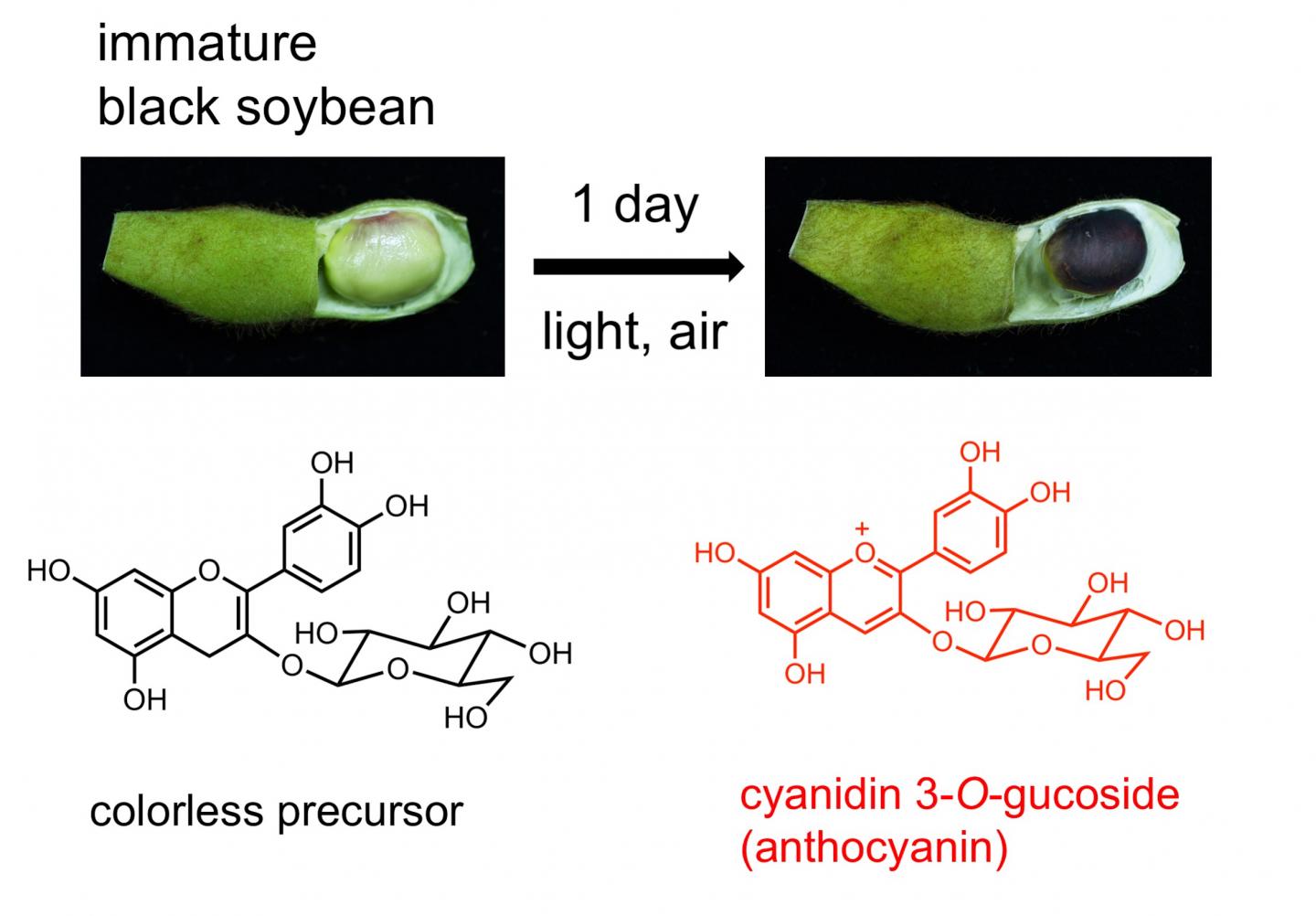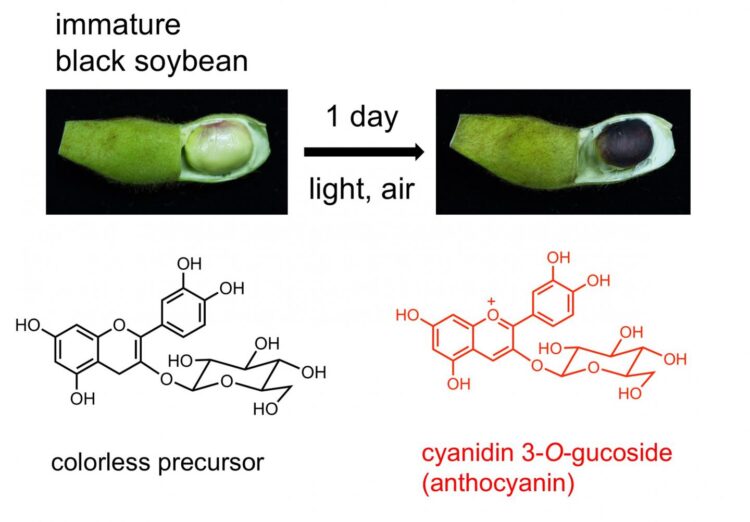Scientists are getting closer to figuring out how to synthesize a plant pigment that could have medicinal uses

Credit: Kumi Yoshida
Nagoya University scientists have furthered understanding of how plants make a common pigment that might have medicinal applications. They published their findings in the journal Scientific Reports.
“We studied black soybeans and found a new biosynthetic precursor of the most common anthocyanin in plants,” says Kumi Yoshida of Nagoya University, who led the study and specializes in natural products chemistry.
Anthocyanins are plant pigments with anti-oxidant activities. They are responsible for many of the red through purple to blue colors found in flowers, fruits, vegetables and roots. Scientists are currently researching their medicinal potential for treating metabolic diseases like diabetes and obesity. But so far, anthocyanins can only be extracted from plants. Scientists want to be able to synthesize large amounts of the pure compounds to accelerate research into their potential benefits, which requires understanding how plants make them.
The most common anthocyanin is cyanidin-3-O-glucoside (Cy3G). Scientists already know quite a lot about how it is made in plants. However, recent research has cast doubt on part of its biosynthetic pathway. Yoshida and her team investigate how plants synthesize pigments, and set out to clarify how Cy3G is made in black soybeans. Normally, the immature seed is green in its pod. Over the course of two months, it turns black due to the accumulation of Cy3G. Exposing the immature green seed to light and air accelerates this process, causing it to turn black within a day.
Yoshida and a team of scientists from Nagoya University and the National Institute of Health Sciences in Japan took advantage of this rapid transformation and analysed the molecular contents in the seed before, during and at the end of the color change of exposed seeds. They specifically focused on Cy3G and another compound called tetrahydroxyflav-2-en-3-ol-O-glucoside (2F3G), which was identified by another research team a few years ago.
Yoshida and her team found that very immature true-green seeds did not contain Cy3G or 2F3G. However, just before they begin to change color, 2F3G can be found in the seed coat. This is followed by an increase in Cy3G and a subsequent decrease in 2F3G. The scientists found that the black seeds in the final stage had a large amount of Cy3G but no 2F3G. They concluded this means 2F3G is a precursor of Cy3G. Further analyses indicated the conversion from 2F3G to Cy3G occurs in the vacuoles of the seed coat and might not be catalysed by an enzyme previously thought to be involved in Cy3G synthesis.
The team next aims to clarify the full steps of Cy3G synthesis in the black soybean and to determine whether these steps are the same in other plants.
###
The paper, “5,7,3′,4′-Tetrahydroxyflav-2- en-3-ol 3-O-glucoside, a new biosynthetic precursor of cyanidin 3-O-glucoside in the seed coat of black soybean, Glycine max,” was published online in the journal Scientific Reports and is available at DOI: 10.1038/s41598-020-74098-6.
About Nagoya University, Japan
Nagoya University has a history of about 150 years, with its roots in a temporary medical school and hospital established in 1871, and was formally instituted as the last Imperial University of Japan in 1939. Although modest in size compared to the largest universities in Japan, Nagoya University has been pursuing excellence since its founding. Six of the 18 Japanese Nobel Prize-winners since 2000 did all or part of their Nobel Prize-winning work at Nagoya University: four in Physics – Toshihide Maskawa and Makoto Kobayashi in 2008, and Isamu Akasaki and Hiroshi Amano in 2014; and two in Chemistry – Ryoji Noyori in 2001 and Osamu Shimomura in 2008. In mathematics, Shigefumi Mori did his Fields Medal-winning work at the University. A number of other important discoveries have also been made at the University, including the Okazaki DNA Fragments by Reiji and Tsuneko Okazaki in the 1960s; and depletion forces by Sho Asakura and Fumio Oosawa in 1954.
Website: http://en.
Media Contact
Kumi Yoshida
[email protected]
Original Source
http://en.
Related Journal Article
http://dx.





